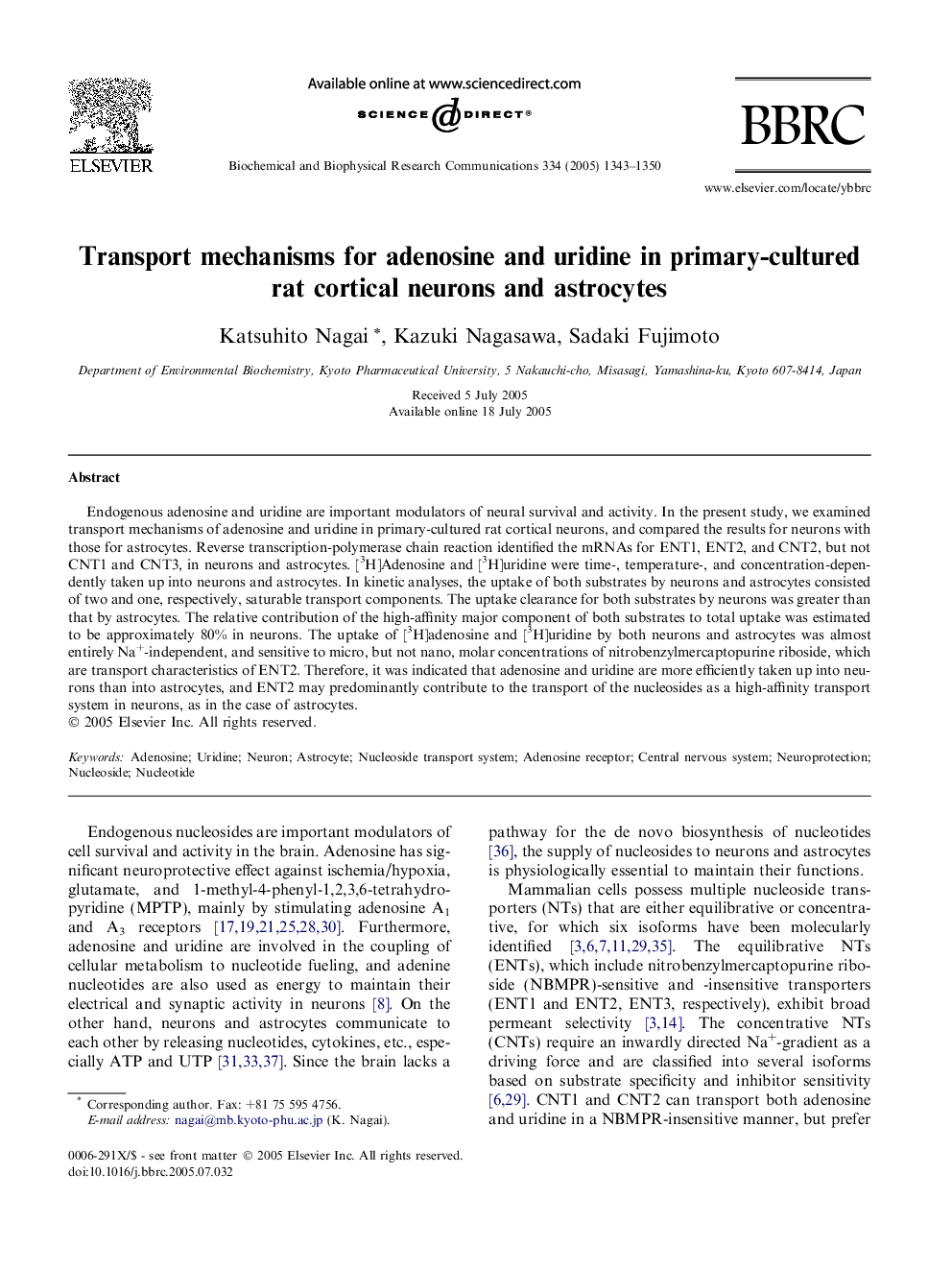| Article ID | Journal | Published Year | Pages | File Type |
|---|---|---|---|---|
| 10769074 | Biochemical and Biophysical Research Communications | 2005 | 8 Pages |
Abstract
Endogenous adenosine and uridine are important modulators of neural survival and activity. In the present study, we examined transport mechanisms of adenosine and uridine in primary-cultured rat cortical neurons, and compared the results for neurons with those for astrocytes. Reverse transcription-polymerase chain reaction identified the mRNAs for ENT1, ENT2, and CNT2, but not CNT1 and CNT3, in neurons and astrocytes. [3H]Adenosine and [3H]uridine were time-, temperature-, and concentration-dependently taken up into neurons and astrocytes. In kinetic analyses, the uptake of both substrates by neurons and astrocytes consisted of two and one, respectively, saturable transport components. The uptake clearance for both substrates by neurons was greater than that by astrocytes. The relative contribution of the high-affinity major component of both substrates to total uptake was estimated to be approximately 80% in neurons. The uptake of [3H]adenosine and [3H]uridine by both neurons and astrocytes was almost entirely Na+-independent, and sensitive to micro, but not nano, molar concentrations of nitrobenzylmercaptopurine riboside, which are transport characteristics of ENT2. Therefore, it was indicated that adenosine and uridine are more efficiently taken up into neurons than into astrocytes, and ENT2 may predominantly contribute to the transport of the nucleosides as a high-affinity transport system in neurons, as in the case of astrocytes.
Keywords
Related Topics
Life Sciences
Biochemistry, Genetics and Molecular Biology
Biochemistry
Authors
Katsuhito Nagai, Kazuki Nagasawa, Sadaki Fujimoto,
